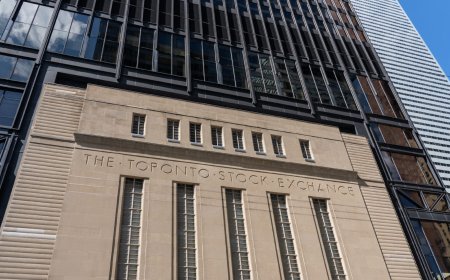Global tailings standard raises the bar for social management
This year marks an important milestone in efforts to prevent dam failures: ICMM members have committed to ensure that, by August, their tailings facilities with the greatest potential adverse impacts will conform with the standard. With a third of the industry by market cap now committed to implement the GISTM, expectations continue to intensify, and many companies are now scrambling to meet the standard’s requirements.


The recent industry engagement efforts of the Church of England and a range of other investors leave no doubt: responsible tailings management is a key focus for 2023. With tailings dam failures on the rise in recent years (a trend expected to continue, unless practices improve), investors, mining communities, workers, and other stakeholders are putting pressure on the mining industry for the wholesale adoption of the Global Industry Standard on Tailings Management (GISTM), the global leading practice standard designed by ICMM, the UN Environment Programme (UNEP), Principles for Responsible Investment (PRI), and their advisors, following the particularly tragic Brumadinho tailings dam disaster in 2019.
This year marks an important milestone in efforts to prevent dam failures: ICMM members have committed to ensure that, by August, their tailings facilities with the greatest potential adverse impacts will conform with the standard. With a third of the industry by market cap now committed to implement the GISTM, expectations continue to intensify, and many companies are now scrambling to meet the standard’s requirements.
Though the GISTM is a technical standard, a gap surfacing for many companies is in the foundational social management practices underpinning the standard’s community-facing requirements, especially at the operational level. A crucial element of responsible tailings management, social management themes surface in over half the GISTM principles.
Your company, too, may be wondering how to bridge these gaps. As the GISTM is likely to become the de facto standard for social management in many companies, understanding the case for and core elements of these robust practices will set your company up for compliance and success.
The social side of responsible tailings management
The GISTM is a technical standard that puts project area communities – which often suffer the devastating consequences of inadequate tailings management – at the heart of its requirements. Many companies exploring the standard quickly realize that these expectations include a substantial increase in engagement with local communities, but that’s only part of the picture.
Community themes feature most prominently in GISTM Topic I (Affected Communities) and GISTM Topic V (Emergency Response and Long-Term Recovery). However, social performance elements appear throughout the standard, with practices and implications that tend to be outside the expertise of the ‘technical’ teams responsible for the design, management, oversight, and audit of tailings facilities.
This is no accident. The broad inclusion of social themes reflects a growing recognition of the importance of integrating robust social management practices and social performance expertise in operational management, in order to prevent adverse impacts on local communities and to manage operational risk. Investors are a major driving force. With the Church of England and the Swedish Council on Ethics at the helm, the Investor Mining and Tailings Safety Initiative is rapidly fostering more responsible tailings management across the industry. And, as a range of stakeholders demand that mining improve its ESG performance, industry associations and standards also increasingly expect companies to fully embed environmental and social management practice at the asset level.
That includes GISTM. In fact, the very first GISTM principle calls on operators to “respect the rights of project-affected people” and to “meaningfully engage them at all phases of the tailings facility lifecycle.” Social management practices – a company’s efforts to engage or consult with, prevent adverse impacts on, manage risks related to, and understand the realities and aspirations of project-area communities – truly are at the core of the standard. But, notably, the GISTM promotes leading practice, and many operators will be hard-pressed, at present, to demonstrate robust social management practices and effective, consistent management of social risk and impacts.
The benefits of robust social practices
Just like health, safety, and environmental management, strong social management practices support good social performance and continuous improvement. Unlike the rest of HSEC, however, the “S” has no ISO Standard to help companies to identify, manage, monitor, and control social themes. And while the performance expectations of ICMM, MAC, and other industry bodies help to map a path towards good social performance, the social management approaches of many companies are nowhere near as robust as in health and safety or environment. Though social risk and community impacts typically rank among top industry risks, specialist practitioners generally acknowledge that social management and community relations often fall far short of good practice and sometimes even fail to secure social acceptance or maintain basic communication channels.
Enter GISTM. The standard’s comprehensive lens on what it means to manage tailings responsibly is likely to become a core driver for improved social performance across the industry. At a time when social opposition and ESG-related litigation are on the rise, the GISTM’s expectations help companies to manage permitting risk, project schedule delays, social licence, reputational harm, lawsuits and more. GISTM also helps companies to improve emergency preparedness, a core area of responsible tailings management where many companies remain deficient, especially as dam failure risk is often underestimated. And the standard expects a level of engagement that many companies currently avoid, ostensibly not wanting to overwhelm or confuse stakeholders with technical content, but more likely for fear of alarming project-affected communities or arming anti-NGOs with content that may bolster anti-mining sentiment.
In short, in asking operators to use robust social management practices and tools to build and foster trusted company-community relationships, GISTM is creating the impetus for much-needed improvements to operational social management across the industry. What does that look like in practice? Below we capture six key components of what will rapidly become expected practice for tailings facility operators.
1. Understand the social environment and plan accordingly
The GISTM expects you to develop a socio-economic knowledge base; a documented understanding of the social environment of your tailings storage facility (TSF). This area includes the full footprint of the TSF and the area where the facility can be seen, heard, smelled, otherwise experienced, or could inundate in the event of a breach. Crucially, this area is usually larger than most operations’ regular area of influence. You will need to document baseline knowledge about who lives, works, and/or has land-connections (owner, resident, user) in the TSF area: that is, the project-affected people. You will also need to assess how the TSF impacts them (e.g., consider health, economic, cultural, rights, and other impacts) and establish plans to mitigate actual and potential impacts.
2. Pursue ‘meaningful’ engagement and act on input
Another core, but challenging GISTM requirement is to ensure your engagement with project-affect people is meaningful. The term “meaningful” does a lot of heavy lifting. For many companies, the GISTM’s meaningful engagement will require a substantial shift in mindset, culture, and practice, including making proactive efforts to eliminate community member barriers to participation such as language, (opportunity) cost, literacy, and security. You will need to foster transparent communication and mutual dialogue, including in decision-making on topics including TSF design, management, emergency and post-failure response, and closure. Proactively inviting stakeholder perspectives, listening more than speaking, and integrating those perspectives into business decisions are key.
3. Plan for emergencies together
One of the more intimidating expectations of the standard is to undertake annual tailings training and emergency simulation exercises with communities. To ensure emergency response planning and long-term recovery planning are inclusive (as required), it helps companies to focus on building capacity internally and externally, support relevant public sector partner capacity, and promote the integration of TSF emergency response planning in broader emergency response planning in your operating region.
4. Respect project-affected people’s rights
To ensure your company respects human rights, you will need to conduct human rights due diligence and develop an effective operational-level community feedback mechanism, aligned with the UN Guiding Principles on Business and Human Rights (UNGPs). You will also need to involve project-affected people in evaluating and improving feedback management across the TSF’s lifecycle. And, your company will need to work to obtain and maintain the free, prior and informed consent (FPIC) of Indigenous Peoples or tribal peoples whose rights may be impacted by a new TSF.
5. Embed practices in operational management systems
Though still rudimentary in many companies, a robust social management system (SMS) is crucial to aligning with the GISTM. Whether stand-alone or part of an environmental and social management system, it should comprise a methodical ‘Plan, Do, Check, Act’ process to ensure your company takes a structured and integrated approach to short- and long-term social risk and impact management. At minimum, your activities should include updating your socio-economic knowledge base, ongoing external engagement planning, understanding actual and potential TSF impacts on project-affected people, and taking action to mitigate them. The SMS must have clear interconnections with your company’s tailings management system and your social management staff should contribute to both tailings and operational risk assessment processes.

6. Recognize the role of executive incentives
Just as with other ESG themes, the practices required by the standard can be more deeply embedded with appropriate incentives. Critically, your company will be required to ensure executive performance reviews and/or incentives consider public safety, as they relate to tailings management. It is also useful to foster and incentivize cross-functional collaboration and knowledge sharing between social, environmental, and tailings practitioners to inform tailings-related decision-making from design to closure.
The GISTM undoubtedly represents a step-change in mining’s approach to tailings management, but, crucially, it also raises the bar for industry social management. In doing so, it aims to foster cross-disciplinary collaboration, learning, and improved tailings management across the industry and has the potential to significantly improve the industry’s performance across a range of sustainability themes. While the effort required to meet these expectations may feel immense for many, calls for even stronger requirements are already emerging. As wholesale GISTM adoption proliferates, those partially implementing (or opting out altogether) are likely to quickly find themselves struggling with growing social, reputational, financial, and legal risk. The GISTM’s social criteria may be initially uncomfortable for companies, but they are a powerful and timely step in the direction of social acceptability, effective risk management, and trust building. All the local benefit and social purpose narratives in the world mean little if host communities feel like they can’t trust the industry and your company. The GISTM offers the chance to prove that they can.
Elizabeth Freele and Rachel Dekker are the co-founders and managing partners of mining sustainability think tank and ESG consultancy Sympact. Sympact supports companies in ensuring their social performance meets growing expectations through advisory services, training, and thought leadership products.


















